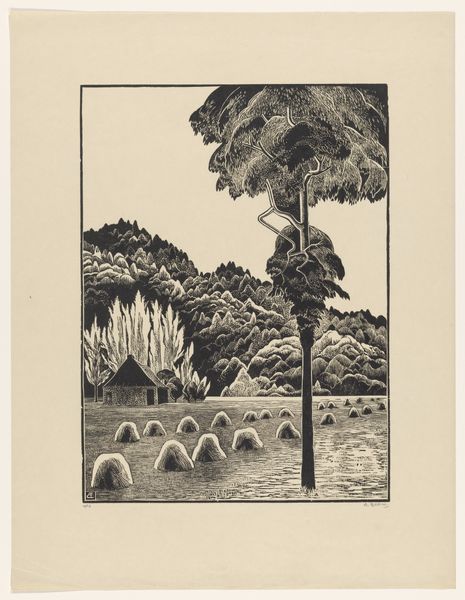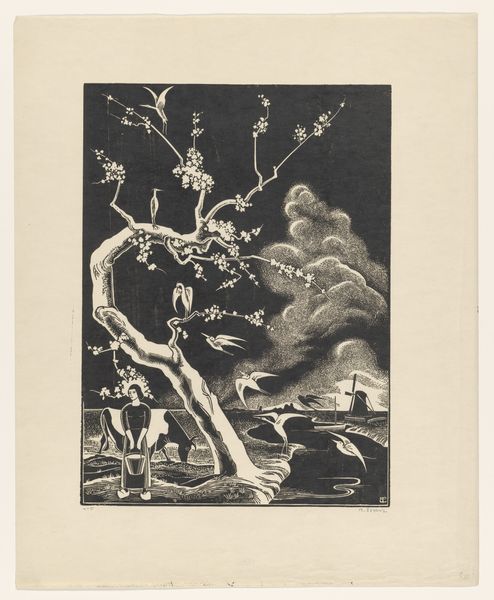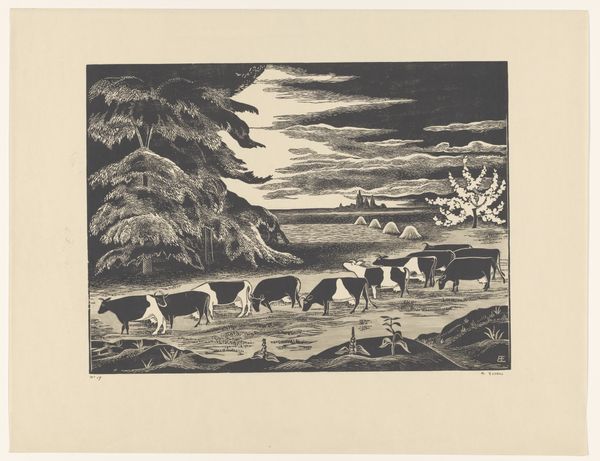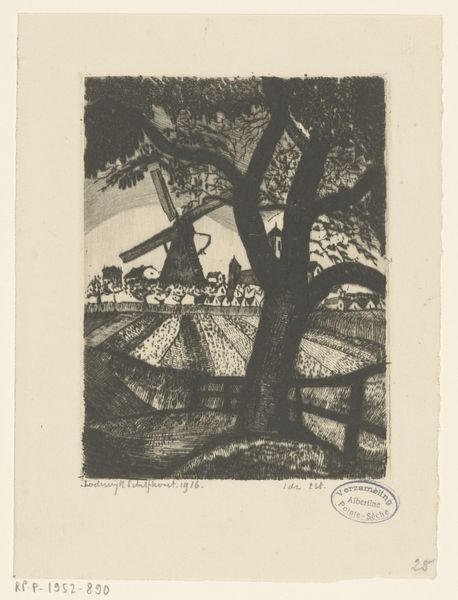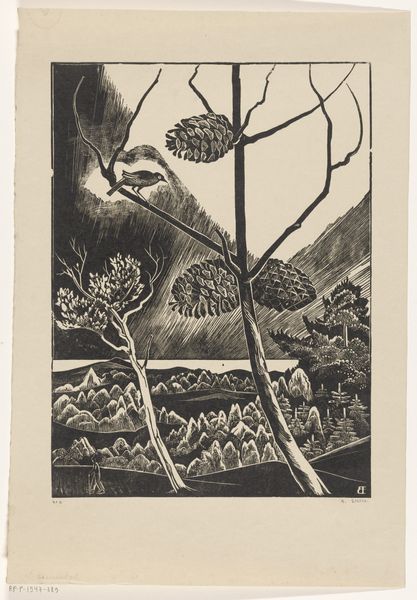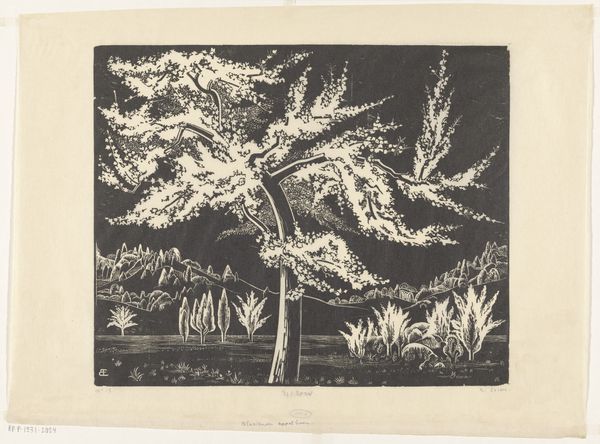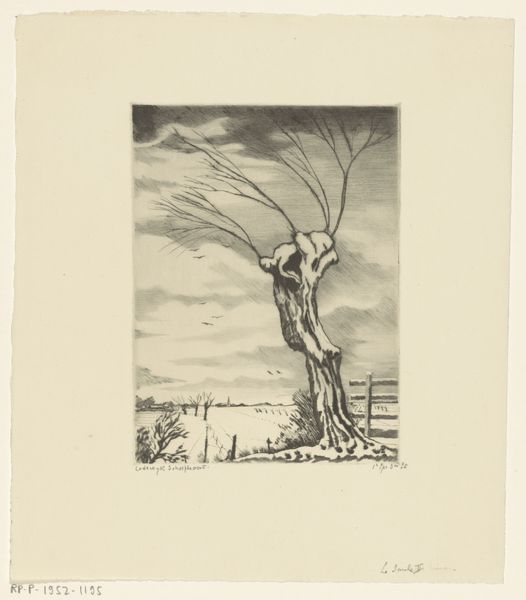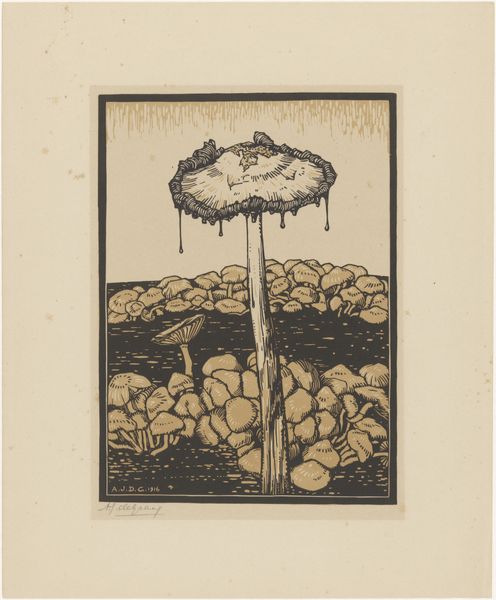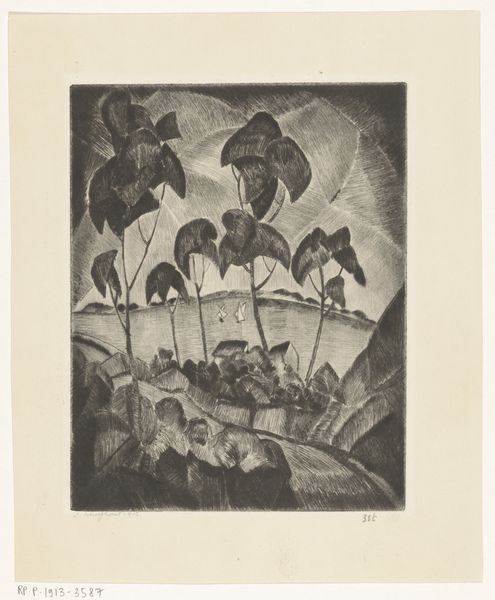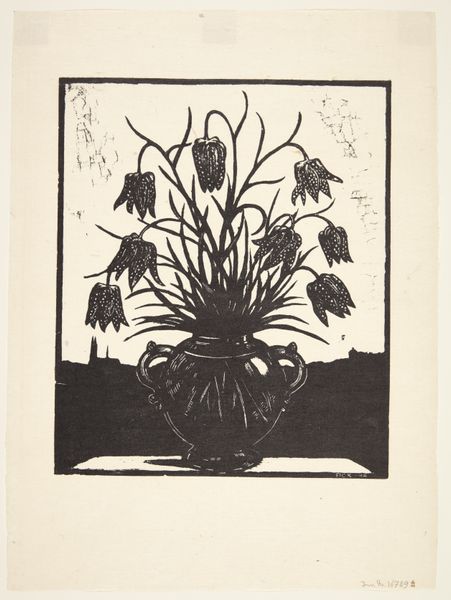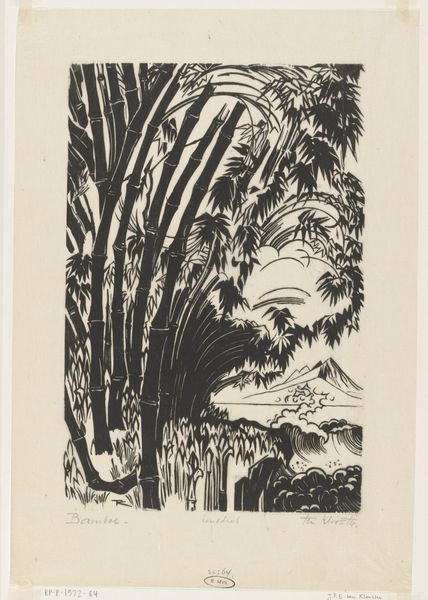
Dimensions: height 572 mm, width 442 mm
Copyright: Rijks Museum: Open Domain
Curator: Bernard Essers created this expressive landscape between 1937 and 1938. Titled "Zwanebloem in een landschap"—that's "Swan Flower in a Landscape"—it’s a woodcut print. The dramatic use of black and white is really striking. Editor: Absolutely, my first thought was of fairy tales! There’s something quite foreboding and otherworldly about this flower towering over everything. The bold lines and stark contrast lend it a kind of magical quality, almost theatrical. Curator: The political context is key. Remember, this work appeared as tensions were rising across Europe. There’s an unease there that reflects those turbulent times. The dark, looming sky seems to mirror the apprehension felt by many. This art offers some commentary on society; a quiet, somber protest in stark black and white. Editor: Yes, it’s not just a simple, idyllic landscape, is it? The perspective is so interesting, placing us down low, looking up at the exaggerated flower. This adds to the drama. The seemingly serene cows in the distance, grazing in the shadow of this floral giant – what do you make of it? Curator: I believe Essers sought to use a common pastoral scene to question the viewer on themes that resonated within the culture of the time. Editor: Almost like a silent alarm. It has such incredible power, achieved through such deliberate simplicity. And yet, despite that austerity, the craftsmanship really shines through. Look at the intricate details carved into the flower, and even the delicate reflections on the water! Curator: Precisely, and while we see echoes of Expressionism, there’s also a distinctive voice here, an approach tailored toward communicating a precise observation on Dutch culture, as the world headed toward devastation. Editor: It lingers, doesn't it? Not just a pretty landscape, but a disquieting presence in black and white. Curator: Indeed, art, at its most effective, always reflects, always comments and allows one to appreciate the moment the piece represents in time.
Comments
No comments
Be the first to comment and join the conversation on the ultimate creative platform.
